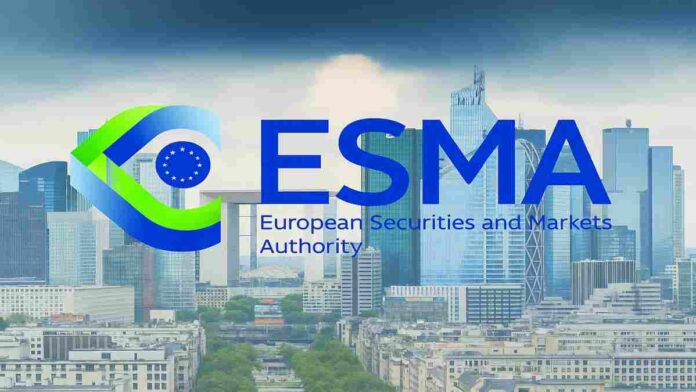The European Union’s three main financial regulators — ESMA, EBA, and EIOPA — have laid out their roadmap for 2026, and it is one that reflects the challenges of our time: technological disruption, climate stress, and the need for simpler, smarter regulation.
The Joint Committee of the European Supervisory Authorities (JC) — the body that brings the three together — plans to focus on digital resilience, sustainable finance, consumer protection, and financial stability, all while working under what it calls the “simplification agenda.”
In plain terms, Brussels wants to make financial regulation less complex, more transparent, and better coordinated — because the more complex the rulebook, the harder it becomes to see risks before they explode.
A World of Constant Risk
The tone of the 2026 Work Programme is pragmatic, even cautious. It acknowledges the obvious: Europe is operating against a backdrop of geopolitical tension, digital risk, and economic uncertainty. But rather than promising sweeping reforms, the Joint Committee is focused on execution — making sure the rules already in place actually work as intended.
The three authorities — covering banks, insurers, and capital markets — will continue to meet regularly with the European Commission and the European Systemic Risk Board (ESRB) to monitor vulnerabilities across the financial system.
That coordination may sound technical, but it is vital. As one EU official put it recently, “The next crisis won’t care which agency’s mandate it falls under.”
Digital Resilience: DORA in Action
One of the biggest milestones for 2026 will be the full rollout of DORA — the Digital Operational Resilience Act — a sweeping framework that governs how banks, insurers, and investment firms manage cyber risks and technology dependencies.
The Joint Committee will oversee the first complete oversight cycle under DORA. By the end of 2025, the European Supervisory Authorities are expected to designate the first list of Critical Third-Party Providers (CTPPs) — major cloud or ICT companies whose services are essential to the EU’s financial infrastructure.
Once that list is finalized, 2026 will mark the beginning of actual examinations. Each CTPP will have an annual and multi-year oversight plan, and regulators will conduct reviews and issue recommendations to strengthen cybersecurity and prevent concentration risks — the danger that too much of Europe’s financial system depends on too few technology vendors.
This isn’t just a bureaucratic exercise. After a string of high-profile cyber incidents, the EU is moving to ensure its financial backbone can withstand shocks. If a systemic cyberattack were to hit a major data provider tomorrow, the EU-SCICF — the new Systemic Cyber Incident Coordination Framework — would be the central nervous system for crisis response.
In short, 2026 will be the year when Europe stress-tests not just its banks, but its servers.
Protecting Consumers in a Complex Market
Beyond the digital sphere, consumer protection remains a top priority. The Joint Committee is zeroing in on simplifying the often-confusing PRIIPs Key Information Document (KID) — the short disclosure form retail investors receive before buying investment products.
Under the EU’s Retail Investment Strategy, the authorities will work to streamline and simplify this document, particularly the performance and cost sections that have long been criticized for being too technical for ordinary savers.
The regulators also plan to intensify financial education, holding EU-wide workshops and sharing best practices among national authorities. The message is simple: even the best regulation means little if retail investors don’t understand the risks they’re taking.
Sustainability: Between Ambition and Realism
Europe’s leadership in sustainable finance continues to evolve — and the Joint Committee’s 2026 plan reflects a more mature phase of that journey.
The focus will shift toward refining existing frameworks like the Sustainable Finance Disclosure Regulation (SFDR). The ESAs (European Supervisory Authorities) will monitor the ongoing legislative review and prepare to update technical standards once the new rules are finalized.
Interestingly, the 2026 programme also mentions a pause: regulators will not publish the usual annual report on “Principal Adverse Impacts” (PAIs), citing the need to align with the EU’s simplification agenda. That’s bureaucratic speak for: we need to make sustainability reporting clearer and less burdensome before we make it bigger.
Another key development will be the creation of Joint Guidelines for ESG Stress Testing — new standards that will help banks and insurers test how climate and environmental risks affect their resilience. These guidelines, mandated by the CRD6 and Solvency II frameworks, are expected by January 2026 and could become a cornerstone of Europe’s green transition strategy.
Keeping an Eye on the Big Picture: Financial Stability
While climate and technology dominate the headlines, the heart of the Joint Committee’s work remains traditional risk oversight.
Throughout 2026, the ESAs will produce joint analyses of cross-sectoral risks — in other words, threats that don’t fit neatly into one regulatory silo. The findings will be presented to the EU Council’s Economic and Financial Committee (EFC) and the Financial Stability Table (FST), where policymakers coordinate responses to potential systemic threats.
From cyber incidents to debt stress and liquidity mismatches in non-bank financial institutions, the Joint Committee’s job is to spot cracks before they widen.
Revitalising the Securitisation Market
Securitisation — the bundling of loans into tradable securities — remains a key funding channel in Europe. After completing its second major report on the topic in 2025, the JC Securitisation Committee will spend 2026 implementing follow-ups, including technical advice for the European Commission and coordination among national regulators to revive the market on a sound basis.
This effort will also look outward, monitoring regulatory developments in the US and UK to avoid divergence that could hinder cross-border investment.
From Financial Conglomerates to BigTechs
Other priorities include refining the supervision of financial conglomerates — large groups that operate across banking, insurance, and markets. The ESAs plan to update their list of identified conglomerates, improve reporting templates for intra-group transactions and capital adequacy, and explore how stress testing should work for these complex entities.
Meanwhile, the European Forum for Innovation Facilitators (EFIF) will continue its research on BigTechs and Mixed Activity Groups — firms that straddle technology and finance, like payment giants and digital lending platforms. The EFIF will also coordinate between financial-sector “sandboxes” and the new AI Act sandboxes that EU countries must create, ensuring innovation does not outpace regulation.
The Human Element
If the 2026 Work Programme has a single underlying theme, it’s coordination. Europe’s regulatory machine is vast — three supervisory authorities, 27 national regulators, and countless specialized committees. But the Joint Committee’s tone suggests a growing awareness that effective regulation is not just about more rules, but about better teamwork.
At its heart, this programme is about preparing Europe’s financial system for the unpredictable — be it a cyberattack, a climate shock, or a market panic — while making sure ordinary consumers are protected and informed.
In a world where financial and technological systems are more intertwined than ever, that may be the most human goal of all.
Source: Joint Committee of the European Supervisory Authorities – 2026 Work Programme (October 2025)
Disclaimer
The content on MarketsFN.com is provided for educational and informational purposes only. It does not constitute financial advice, investment recommendations, or trading guidance. All investments involve risks, and past performance does not guarantee future results. You are solely responsible for your investment decisions and should conduct independent research and consult a qualified financial advisor before acting. MarketsFN.com and its authors are not liable for any losses or damages arising from your use of this information.





